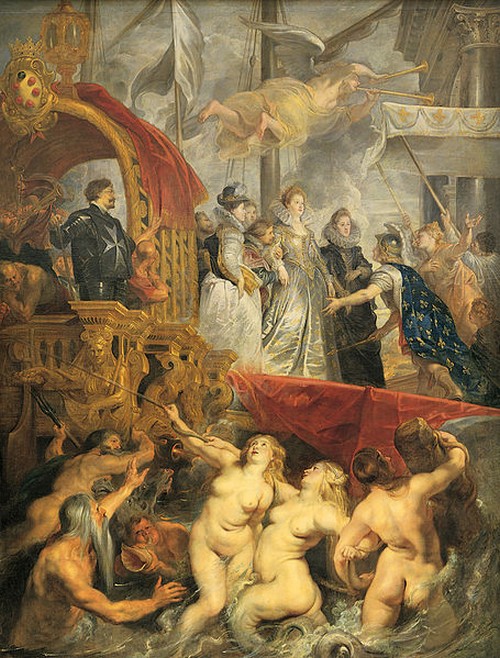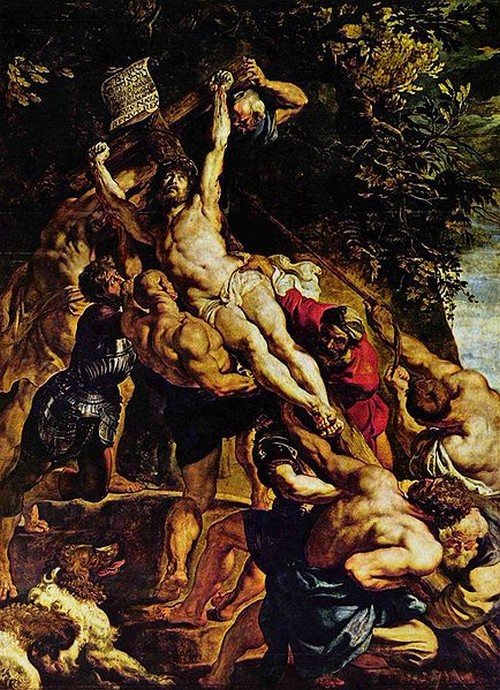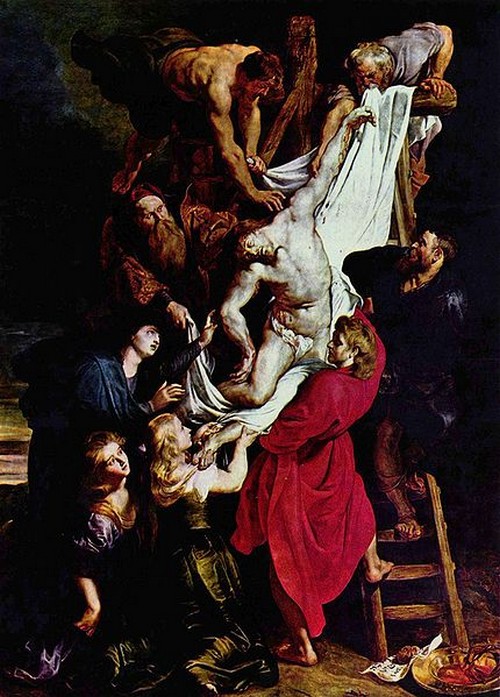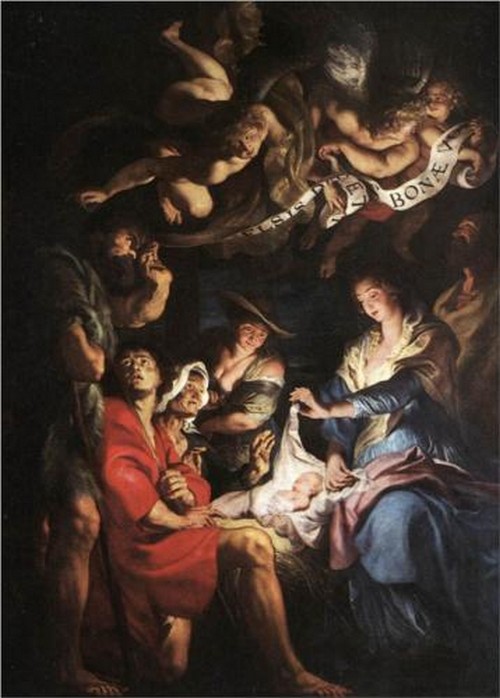Five Must See Peter Paul Rubens Paintings When Visiting Europe
The Baroque Period encompasses European art of the 17th century. The origins of the Baroque can be found in Rome, Italy and was surged by the counter-reformation. Italian Baroque artists exploited emotion and movement to create a greater feeling of intensity in their art. The style was transported to other areas of Europe through the Catholic Church and various artists. Peter Paul Rubens a Flemish born artist is credited to bringing the Baroque to the North. He spent over eight years in Italy where learned the foundations of the Italian style. He was deeply influenced by the work of the Renaissance masters and Caravaggio. He would eventually return to the north and develop the Italian manner into a style that better represented the North. Through his influence Northern European art was eventually elevated to the same status as Italian.
Because Reubens was a Flemish artist who went to Italy and mastered the Italian School much of his great work is found in both places, Italy and Belgium.
Below I analyze five of my favorite works by Reuben which form a comprehensive survey of his great work – and take you to Rome, Paris and Antwerp.
Peter Paul Rubens, Deposition, Borghese Gallery, 1602.
Rubens’ Deposition completed in 1602 is one of his early Italian works. The incarnation of the divine and the human nature of Christ is the main theme of the work. Christ’s sunken body rests on an altar. Rubens was inspired by roman statuary and the figures on the altar resemble classical sculpture. The altar depicts scenes of sacrifice which alludes to the sacrifice Christ undertook for man. This allusion can also be seen in the crown of thorns that has fallen from the head of Christ and rests on the ground next to the altar. Christ’s body is suspended between death and his potential future. His right arm is held by a follower to support his lifeless looking body. The follower looks up the heavens with a look of question and despair. Mary Madelaine holds Christ’s left and hand and wipes a tear from her eye with the other hand. The range of blackish green, black, dull red, bright white and carnation on a background of dark, cloudy night is reminiscent to Caravaggio. Rubens experiments with Caravaggio’s chiaroscuro through the bursting light in the dark background of the painting. Rubens also uses all the spectrums of light in the flesh tones of the subjects. Bright light falls upon the waist of Christ. Rubens exposure to Venetian color can also be seen in the blues and greens. The chromatic texture of the composition is also reminiscent of Titian’s later work.
Peter Paul Rubens, Marie de Medici Disembarking at Marseilles, Louvre, Paris, 1622
The painting Marie de Medici Disembarking at Marseilles best represents Rubens mature Baroque style. The painting depicts Marie de Medici arriving to France from Italy for the first time as the wife of Henry IV. Marie de Medici is in the process of descending from her ship while a knight from Malta stands guard. Her body is limp and her face is expressionless. She remains passive as her aunt, the Grand Duchess Cristina, her sister Eleonara, Duchess of Mantua and other nobles lead her off the ship. A winged and trumpeting Fame hover overhead. A man draped in coat decorated with the Fleur-de-lis, the floral symbol of French reality is a personification of Italy. He welcomes Marie to France. The sea and sky celebrate her safe arrival. Neptune and the Nereids the daughters of the sea god Nereus below the boat also welcome her.
The painting fully exploits the Baroque love of drama and intense movement. Rubens created a crowded scene that overwhelms the observer with and endless feeling of movement. The figures of the composition are all in the process of movement besides Marie and her entourage. The sea creature’s twist and the feet of appear to move as he flies drapery of the boat seems to move along with water. The water violently splashes. The fabric on the boat and the flag moves in the wind. The intrinsic design and coloring of the ship add to the intensity of the scene. The colors are vibrant and the tones of the flesh of the figures add to their movement. This painting contrasts sharply with the dark and light colors Rubens used in the previous works discussed.
Peter Paul Rubens, Elevation of the Cross, Cathedral of Our Lady, Antwerp 1611.
During his first five years in Antwerp the development of his own style can be seen. The two best examples are two triptychs known as the Elevation of the Cross and the Descent from the Cross. Rubens applied the foundations he had learned in Italy and brought forth his inherent vitality and dramatic power. The Raising of the Cross shows more dependence upon his learned style and the Descent from the Cross mark a break that would distinguish his work. These painting turned him into the leading Northern painter.
The Elevation of the Cross was commissioned by one of Rubens early Flemish patrons Van der Geest in 1610. It was commissioned for Walpurgis-Church at Antwerp and now stands in the Antwerps cathedrals transept. The Elevation of the Cross is the central panel of a triptych. Christ is raised on a cross that rises across the upper center of the picture by men. The action is witnessed by St John, the Virgin Mary. A group of weeping women and child also appear on the left panel. St John looks on with sorrow and appears resigned to Christ’s fate. A beggar appears distraught as a woman and child appear as they realize the significance of the action taking place. On the right panel, a Roman officer watches on horseback while soldiers in the background crucify two thieves. When viewing these panels as a whole the viewer feels the intensity and dram of the dramatic scene taking place.
The diagonals of the composition convey the energy required to lift the weight of his body and also alludes to his significance. There are tremendous straining forces and counter-forces that emphasize the dramatic feeling of the scene. This is evident in the struggle the men undergo to raise the cross Christ is mounted upon. This energy increases the intensity of the scene and gives it a dynamic feeling which is a hallmark of the Baroque. There is great force in the subjects and they appear to understand what they have to do. Rubens places strong emphasis on the muscles of the men which was a characteristic of Michelangelo’s and Tintoretto’s male types. Every muscle needed to lift Christ can be seen on the men.
Rubens also gives a realism to his figures that is more characteristic to traditional Northern qualities. Rubens gives special attention to the flesh of the subjects. The coloring and the shading of the flesh gives the painting a naturalistic feeling. This attention to flesh would become characteristic to Northern Baroque art. The emotions on the faces of the figures are also realistic. Emotional tension can be seen in the face of Christ as he looks back to see the light of day for the last time. Yet, at the same time his face is dignified and controlled. The strain from lifting the cross can be seen in the faces of the men. An armored man on the left of Christ looks up at him and it appears as if he is contemplating his actions. A sense of fear can be seen in his eyes.
Rubens uses shades of dark and light to heighten the drama. The central and right panel foregrounds are filled with light. Intense light falls upon Christ and the men working to pull up the cross. The light becomes even brighter on the face and body of Christ. The background in the central panel is dark and gloomy. It is filled with a hill overtaken by trees that appear to be swaying back and forth. Rubens used dark and light shades of green that give a sense of motion. The velvetness of the colors is reminiscent to those of the Venetian masters. The sky peeps through in the central panel and extends into the right panel. The lower sky is filled with white and blue clouds and the disappearing sun is being overtaking by dark clouds. The brushstrokes make the clouds appear as they are moving fast. The sky is on the verge of turning turbulent anticipating the scene that is about to take place in the foreground.
Rubens starts to incorporate more Northern characteristic into the Elevation of the Cross, but the composition is still heavily dependent on the Italian manner. After painting the Elevation of the Cross Rubens makes a more conscious effort to alter his style to better suit Northern tastes. He attempted to achieve a greater balance and clarity. He concentrates on more symmetrical compositions with a harmonious distribution over the different planes. The figures appear highly sculpted and the colors become cooler. This can be seen in the Descent from the Cross the central panel of a triptych. It was commissioned in 1611 for the altar of the Guild of Harquebusiers in Antwerp Cathedral. The tryptch depicts three scenes connected with the idea of “Christ-bearer” the literal meaning to St Christopher’s name. St Christopher was the patron saint of the guild. The Cross is meant to symbolize St Christopher the “Christ-bearer”.
Peter Paul Rubens, Descent From the Cross (Central Panel), Antwerp, 1611.
The central panel, the Descent from the Cross shows Christ being brought down from the Cross. Christ is surrounded by a circle of figures. Two men standing on ladders leaning on the cross are placed on either side of Christ. Further down the ladder, Joseph of Arimathea helps pull the cloth and to this right on the other ladder is Nicodemus. Below Mary Magdalene kneels as she captures the left leg of Christ. The Virgin is dressed in blue and lifts her hand trying to figure out a way to help. The woman directly below the Virgin is Mary Cleophas. Christ body is in the center. His lifeless head hangs on his right shoulder. His left arm is held up by the man lowering his body and his legs gently bend. His body is lowered on a diagonal forming an elongated “S” form. The effort and bodies of the helpers all flow dynamically across this diagonal and appear bound together through the spiritual experience. The body of Christ also flows into the hands of his follows creating a greater sense of unity. A Baroque unity of action and dynamics separates this work from his earlier pieces. This can be seen when looking at the Elevation of the Cross which lacks the same continuity of movement.
The emotional faces of the people also flow and complement the other. Each figure has a distinct physiological personality, unlike previous northern emotional types. Ruben’s Mary Magdalene is portrayed differently than the Italian prototypes he studied. Mary Magdalene is involved with the action in this work and her suffering is not seen as in Italian representations. He portrays her as a young beautiful maiden with a nice complexion and very fair hair. This would become Rubens female type of beauty. This type would become one other Northern artists would replicate in their own works. Once again, Rubens employs his understanding of light first learned from Caravaggio. However, there is a clarity and vibrancy not seen in the works of his Italian contemporaries. Rubens uses blonder tints of color which is more characteristic to the High Baroque. The colors are not as dramatic and are cooler.
Peter Paul Rubens, Adoration of the Shepherds, Antwerp, 1608
Rubens eventually returned to Rome. In 1608, he painted The Adoration of Shepherds. The Adoration of the Shepherds was commissioned for the Oratorian church in Fermo. This painting is characteristic of his late Italian works. Rubens depicts the bible story of the Nativity. Christ lies on a white cloth in a basket of hay. Bright Light falls on Christ making him the focus of the painting. The light also falls upon the Virgin and the woman that sits to her right. Rubens uses light signifies the importance of the event. The lighting adds to the drama of the scene. Rubens was obviously influenced by Caravaggio who employed the use of light for the same purpose. The movement and expression in the Adoration of the Shepherds is emotional.





